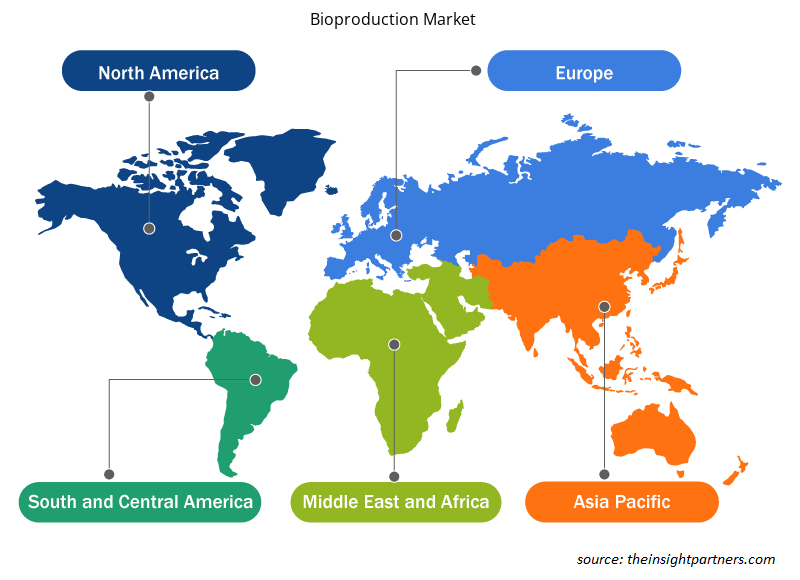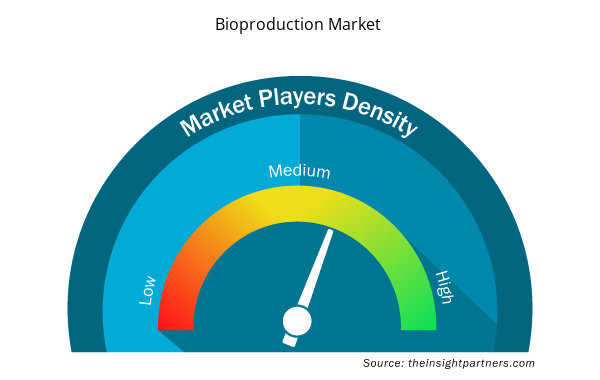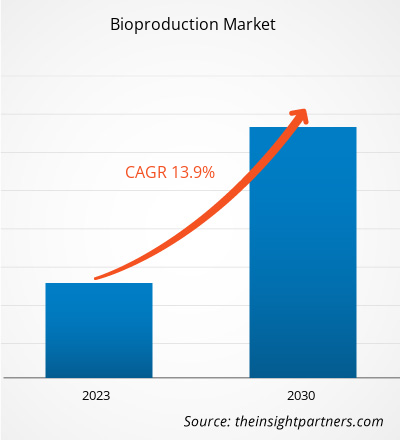[研究报告] 生物生产市场规模预计将从 2022 年的 223.3724 亿美元增长到 2030 年的 633.9393 亿美元;预计 2022-2030 年期间市场复合年增长率为 13.9%。
市场洞察和分析师观点:
自动化可以为细胞疗法开发商带来诸多好处,包括降低污染风险、提高一致性和降低生产成本。许多公司都提供了实现自动化的设备,例如 Lonza Cocoon 和 Miltenyi 的 CliniMACS Prodigy 系统,这些设备旨在实现单个系统内 CAR-T 工艺大多数连续单元操作的自动化。越来越多的细胞疗法已将全球细胞疗法产品的生产从小批量转移到大批量。此外,细胞疗法从学术和临床环境发展到大规模生产和商业化,也增加了对制造自动化的需求。细胞疗法研究活动的增加导致对先进制造解决方案的需求增加。鉴于此,许多参与者都在提供产品来满足学术研究人员和大型生物技术公司的数字需求。例如,2019 年 5 月,GE Healthcare 推出了 Chronicle Web 应用程序来支持完整的细胞疗法工作流程。Chronicle 自动化软件是一种符合良好生产规范 (GMP) 的数字解决方案,旨在优化复杂的细胞疗法工艺开发和制造。
公司也在进入细胞治疗自动化的战略和技术发展阶段。例如,2020 年 7 月,赛默飞世尔科技公司 (Thermo Fisher Scientific Inc.) 和 Lyell Immunopharma 合作开发和制造流程,为癌症患者设计有效的细胞疗法。在这种合作关系下,两家公司旨在提高 T 细胞的适应性,并支持开发符合现行良好生产规范 (cGMP) 的综合平台(系统和软件)以及试剂、消耗品和仪器。2019 年 3 月,Lonza 与以色列 Sheba 医疗中心合作,利用其即时护理 Cocoon 细胞治疗制造平台提供自动化和封闭的 CAR-T 制造。因此,细胞治疗制造商越来越多地采用自动化,预计将推动生物生产市场的发展。
增长动力:
重磅生物药专利到期为生物生产市场创造机遇
生物制剂代表着一种有望治愈以前无法治愈的疾病的新疗法,在医药市场中正变得非常重要。原创生物制剂的专利预计将在未来几年到期。
下表给出了最畅销生物制品的专利和独占权预计到期日期。
生物制品
|
到期日
|
阿瓦斯丁 | 2022 年 1 月 |
西拉姆扎 | 2023 年 5 月 |
艾德西特利斯 | 2023 年 8 月 |
阿布瑟拉克斯 | 2024 年 10 月 |
加济瓦/加济瓦罗 | 2024 年 11 月 |
达扎雷克斯 | 2026 年 5 月 |
奥克雷维斯 | 2027 年 4 月 |
埃姆加利蒂 | 2028 年 9 月 |
血天秤座 | 2028 年 2 月 |
卢梅特里 | 2028 年 3 月 |
伊姆芬齐 | 2028 年 9 月 |
麦罗塔格 | 2028 年 4 月 |
伊姆芬齐 | 2028 年 9 月 |
麦罗塔格 | 2028 年 4 月 |
西尔万特 | 2034 年 7 月 |
资料来源:仿制药和生物仿制药倡议 (GaBI) 期刊
原创生物制品的专利到期和其他知识产权将导致未来需要引入新的生物仿制药。因此,未来几年市场参与者之间的竞争将加剧。因此,预计重磅生物制剂的专利到期将在预测期内为生物生产市场创造丰厚的机会。
定制此报告以满足您的需求
您可以免费定制任何报告,包括本报告的部分内容、国家级分析、Excel 数据包,以及为初创企业和大学提供优惠和折扣
- 获取此报告的关键市场趋势。这个免费样品将包括数据分析,从市场趋势到估计和预测。
报告细分和范围:
“生物生产市场”根据产品、应用、设备和最终用户进行细分。按产品划分,生物生产市场细分为生物制剂和生物仿制药、疫苗、细胞和基因疗法、核酸疗法等。生物制剂和生物仿制药部分在 2022 年占据最大市场份额;预计细胞和基因疗法部分将在 2022-2030 年期间实现市场上最高的复合年增长率。根据应用,生物生产市场分为类风湿性关节炎、血液病、癌症、糖尿病、心血管疾病等。癌症部分在 2022 年占据最大市场份额,预计在 2022-2030 年期间实现最高复合年增长率。在设备方面,生物生产市场细分为耗材和配件、下游设备、生物反应器和上游设备。耗材和配件部分在 2022 年占据了最大的市场份额,预计在 2022-2030 年期间将以最快的速度增长。按最终用户划分,生物生产市场分为生物制药公司、合同制造组织和其他。生物制药公司部分在 2022 年占据了最大的市场份额。预计在 2022-2030 年期间,合同制造组织部分将在市场上实现最高的复合年增长率。
节段分析:
生物生产市场按产品细分为生物制剂和生物仿制药、疫苗、细胞和基因疗法、核酸疗法等。生物制剂和生物仿制药部分在 2022 年占据了最大的市场份额。预计细胞和基因疗法部分将在 2022-2030 年期间实现市场上最高的复合年增长率。细胞疗法和基因疗法是生物医学治疗和研究中的重叠领域。两种疗法都旨在预防、治疗或潜在治愈疾病。此外,这两种疗法都可以改善遗传和后天疾病的根本原因。细胞疗法旨在通过在注射到患者体内之前恢复或修改体外的几组细胞或使用细胞在体内进行治疗来治疗疾病。基因疗法旨在通过恢复或将新基因引入细胞来治疗疾病——无论是在体外(离体)还是在体内(体内)。基因疗法通过调整特定类型细胞中的基因并将其整合到体内来发挥作用。
根据应用,生物制品市场细分为类风湿性关节炎、血液病、癌症、糖尿病、心血管疾病等。癌症领域在 2022 年占据了最大的市场份额,预计在 2022-2030 年期间将实现最高的复合年增长率。医疗费用的上升与癌症治疗的进步相吻合。生物仿制药的发展源于美国和全球优先考虑降低昂贵的肿瘤药物总成本和成本控制技术的策略。出于多种原因,生物制剂在癌症治疗中至关重要。生物药物可以帮助患者的身体识别和对抗癌细胞。某些生物制剂通过干扰癌细胞的生长信号直接靶向癌细胞。化疗后,各种生物制剂可以帮助对抗感染。在美国,结肠癌、胃癌和乳腺癌等恶性肿瘤可以用 FDA 批准的生物仿制药治疗。它们还可用于治疗癌症治疗的不良反应,例如,白细胞计数减少会增加感染的风险。生物制剂在癌症治疗中既用作治疗剂,又用作支持性护理剂。曲妥珠单抗(赫赛汀)是一种生物药物,是一种用于治疗晚期胃癌和乳腺癌的靶向抗癌药物。这种药物的生物仿制药包括 Herzuma 和 Ontruzant。
区域分析:
从地理上看,全球生物生产市场分为北美、欧洲、亚太、南美和中美以及中东和非洲。2022 年,北美占据全球生物生产市场的最大份额。预计亚太地区在 2022-2030 年期间的复合年增长率最高。该地区的市场增长归因于对优质治疗解决方案的需求不断增长、对研发活动的日益关注以及有利的监管环境。此外,增加投资和发展医疗保健基础设施以促进研究活动预计将在 2022-2030 年期间推动亚太生物生产市场的发展。
北美的生物制品市场进一步分为美国、加拿大和墨西哥。该地区市场的增长可归因于糖尿病和不孕症发病率的上升,以及生物仿制药产品开发的增加。
遗传和细胞疾病发病率的不断上升导致对细胞疗法的需求不断增加。美国药物研究和制造商协会 (PhRMA) 2020 年关于细胞和基因疗法研发管线的报告显示,美国有 400 种细胞和基因疗法正在开发中,用于治疗从癌症到遗传疾病再到神经系统疾病等各种疾病和病症。截至 2020 年 2 月,美国已批准 9 种细胞或基因疗法产品,用于治疗癌症、眼部疾病和罕见遗传性疾病。此外,越来越多的初创企业正在美国创新细胞疗法。
在美国,生物仿制药用于治疗癌症、肾病、糖尿病和其他自身免疫性疾病(如克罗恩病和类风湿性关节炎)。据 Cardinal Health 称,美国 FDA 共批准了 33 种生物仿制药,其中 21 种已上市。在市场上的 21 种生物仿制药中,17 种用于治疗癌症相关疾病,3 种用于治疗自身免疫性疾病,1 种用于治疗糖尿病。预计生物仿制药的价格将比生物制剂低 15% 至 30%。仅在 2020 年,生物仿制药就节省了 79 亿美元,随着更多生物仿制药进入市场,预计未来几年节省的费用将大幅增长。据康德乐公司称,到2025年,生物仿制药预计将使美国药品支出减少1330亿美元。此外,政府的支持力度不断加大,也促进了细胞疗法的发展,进而影响了生物生产市场的增长。
据《癌症医学科学》报道,2020 年,癌症是墨西哥第三大死亡原因。墨西哥男性最常见的癌症类型是前列腺癌、结直肠癌、睾丸癌、肺癌和胃癌,而女性主要报告患有乳腺癌、甲状腺癌、宫颈癌、子宫体癌和结直肠癌。在墨西哥,生物仿制药也被称为生物可比物。据 GaBI 称,目前墨西哥已批准 13 种生物可比物,涉及以下治疗类别:红细胞生成刺激剂、粒细胞集落刺激因子、内源性生长激素、促卵泡激素 (FSH)、胰岛素、肿瘤坏死因子 (TNF) 抑制剂、抗病毒药物和干扰素。因此,癌症疾病状况的增加和生物仿制药产品的批准正在推动墨西哥生物生产市场的增长。
生物生产市场区域洞察
Insight Partners 的分析师已详细解释了预测期内影响生物生产市场的区域趋势和因素。本节还讨论了北美、欧洲、亚太地区、中东和非洲以及南美和中美洲的生物生产市场细分和地理位置。

- 获取生物生产市场的区域特定数据
生物生产市场报告范围
| 报告属性 | 细节 |
|---|---|
| 2022 年市场规模 | 223.4亿美元 |
| 2030 年市场规模 | 633.9亿美元 |
| 全球复合年增长率(2022 - 2030 年) | 13.9% |
| 史料 | 2020-2021 |
| 预测期 | 2023-2030 |
| 涵盖的领域 | 按产品
|
| 覆盖地区和国家 | 北美
|
| 市场领导者和主要公司简介 |
|
市场参与者密度:了解其对商业动态的影响
生物生产市场正在快速增长,这得益于终端用户需求的不断增长,而这些需求又源于消费者偏好的不断变化、技术进步以及对产品优势的认识不断提高等因素。随着需求的增加,企业正在扩大其产品范围,进行创新以满足消费者的需求,并利用新兴趋势,从而进一步推动市场增长。
市场参与者密度是指在特定市场或行业内运营的企业或公司的分布情况。它表明在给定市场空间中,相对于其规模或总市场价值,有多少竞争对手(市场参与者)存在。
在生物生产市场运营的主要公司有:
- 赛默飞世尔科技公司
- 默克公司
- F. 霍夫曼-罗氏有限公司
- Bio-Rad 实验室公司
- 龙沙集团
免责声明:上面列出的公司没有按照任何特定顺序排列。

- 获取生物生产市场顶级关键参与者概述
行业发展和未来机遇:
以下列出了生物生产市场主要参与者的各种战略发展:
- 2023 年 3 月,龙沙宣布其位于瑞士维斯普的 cGMP 临床和商业药品生产线已完工。这条新生产线将满足临床和商业供应等各种药品生产需求的客户。这座占地 1,200 平方米的 cGMP 设施包括一条现代化的液体和冻干小瓶灌装隔离器生产线,适用于多种模式,满足 GMP 附件 1 对无菌产品制造的要求。该生产线已完全投入运营,并拥有 cGMP 许可证;计划于 2023 年 4 月灌装第一批客户产品。
- 2022年5月,富士胶片欧文科学公司(FUJIFILM Irvine Scientific Inc.)宣布在中国苏州新区建成创新与合作中心,该公司是生物生产和细胞治疗制造用无血清和化学成分确定的细胞培养基的开发和制造领域的全球领导者。
- 2021 年 12 月,富士胶片尔湾科学公司 (FUJIFILM Irvine Scientific Inc) 宣布在中国苏州新区建立创新与合作中心。富士胶片尔湾科学公司是生物生产和细胞治疗制造用无血清和化学成分确定的细胞培养基的开发和制造商,是全球领先的企业。通过这个新中心,专家将与客户合作,设计满足其生物制造需求的上游细胞培养工艺。
- 2023 年 3 月,BiVACOR Inc 旗下的 Cormorant Asset Management 和 OneVentures 通过 OneVentures Healthcare Fund III 为该公司注资 1800 万美元。这些资金将帮助该公司聘请重要高管,并支持其正在进行的研发以及人体试验的早期可行性研究。利用这笔资金,该公司将聘请重要职位的候选人,例如研发专业人员和高管,作为其将业务规模扩大一倍的努力的一部分。BiVACOR Inc 还希望在 2023 年底前首次在人类受试者身上对其全人工心脏进行早期可行性研究。
竞争格局和重点公司:
Lonza Group AG、bbi-biotech GmbH、Danaher Corp、Sartorius AG、FUJIFILM Irvine Scientific Inc、Thermo Fisher Scientific Inc、Merck KGaA、F. Hoffmann-La Roche Ltd 和 Bio-Rad Laboratories Inc 是生物生产市场的知名公司。这些公司专注于新技术、升级现有产品和地域扩张,以满足全球日益增长的消费者需求。
- 历史分析(2 年)、基准年、预测(7 年)及复合年增长率
- PEST 和 SWOT 分析
- 市场规模价值/数量 - 全球、区域、国家
- 行业和竞争格局
- Excel 数据集


- Sports Technology Market
- Small Internal Combustion Engine Market
- Passport Reader Market
- Tortilla Market
- Predictive Maintenance Market
- Hydrogen Storage Alloys Market
- Medical Audiometer Devices Market
- Explosion-Proof Equipment Market
- Lyophilization Services for Biopharmaceuticals Market
- Antibiotics Market

Report Coverage
Revenue forecast, Company Analysis, Industry landscape, Growth factors, and Trends

Segment Covered
This text is related
to segments covered.

Regional Scope
North America, Europe, Asia Pacific, Middle East & Africa, South & Central America

Country Scope
This text is related
to country scope.
常见问题
The bioproduction market, based on end user, classified into biopharmaceutical companies, contract manufacturing organizations, and others. The biopharmaceutical companies segment held the largest share of the market in 2022. However, the contract manufacturing organizations is anticipated to register the highest CAGR in the market during 2022–2030.
The bioproduction market, based on application, is segmented into, rheumatoid arthritis, hematological disorders, cancer, diabetes, cardiovascular diseases, and others. The cancer segment held a larger market share in 2022 and is anticipated to register a highest CAGR during 2022–2030.
Asia Pacific is expected to be the fastest growing region in the bioproduction market. The growth of the market in Asia Pacific is anticipated to grow at a faster pace owing to factors such as growing need for superior treatment solutions, increasing focus on research and development activities, and favorable regulatory scenarios. Additionally, increasing investments and developing healthcare infrastructure to boost research activities are estimated to drive the Asia Pacific bioproduction market during 2022–2030.
The bioproduction market, based on product, is segmented into biologics and biosimilars, vaccines, cell and gene therapies, nucleic acid therapeutics, and others. In 2022, the biologics and biosimilars segment held the largest share of the market. Moreover, the cell and gene therapies segment is expected to record higher CAGR during 2022-2030.
The bioproduction market majorly consists of the players such as Lonza Group AG, bbi-biotech GmbH, Danaher Corp, Sartorius AG, FUJIFILM Irvine Scientific Inc, Thermo Fisher Scientific Inc, Merck KGaA, F. Hoffmann-La Roche Ltd, and Bio-Rad Laboratories Inc. among others.
US holds the largest market share in bioproduction market. Growing incidences of genetic and cellular disorders are leading to increasing demand for cell therapies. A 2020 PhRMA report on the cell and gene therapy pipeline revealed that there are 400 cell and gene therapies in development to target a variety of diseases and conditions from cancer to genetic disorders to neurologic conditions in the US.
Bioproduction is the process by which a living system produces biological molecules (proteins, antibodies, hormones, membranes, and other macromolecules) to treat diseases that are hard to treat with traditional chemical compounds, such as cancer, uncommon, chronic, or degenerative disorders. These cutting-edge treatment approaches include gene therapy, cell therapy, and vaccinations, among others. The expression of bioproduction is predicated on the structure and architecture of the biological system.
The factors that are driving growth of the market are rising adoption of regenerative medicines and increasing prevalence of chronic diseases.
Trends and growth analysis reports related to Life Sciences : READ MORE..
The List of Companies - Bioproduction Market
- Thermo Fisher Scientific Inc
- Merck KGaA
- F. Hoffmann-La Roche Ltd
- Bio-Rad Laboratories Inc
- Lonza Group AG
- bbi-biotech GmbH
- Danaher Corp
- Sartorius AG
- FUJIFILM Irvine Scientific Inc
The Insight Partners performs research in 4 major stages: Data Collection & Secondary Research, Primary Research, Data Analysis and Data Triangulation & Final Review.
- Data Collection and Secondary Research:
As a market research and consulting firm operating from a decade, we have published and advised several client across the globe. First step for any study will start with an assessment of currently available data and insights from existing reports. Further, historical and current market information is collected from Investor Presentations, Annual Reports, SEC Filings, etc., and other information related to company’s performance and market positioning are gathered from Paid Databases (Factiva, Hoovers, and Reuters) and various other publications available in public domain.
Several associations trade associates, technical forums, institutes, societies and organization are accessed to gain technical as well as market related insights through their publications such as research papers, blogs and press releases related to the studies are referred to get cues about the market. Further, white papers, journals, magazines, and other news articles published in last 3 years are scrutinized and analyzed to understand the current market trends.
- Primary Research:
The primarily interview analysis comprise of data obtained from industry participants interview and answers to survey questions gathered by in-house primary team.
For primary research, interviews are conducted with industry experts/CEOs/Marketing Managers/VPs/Subject Matter Experts from both demand and supply side to get a 360-degree view of the market. The primary team conducts several interviews based on the complexity of the markets to understand the various market trends and dynamics which makes research more credible and precise.
A typical research interview fulfils the following functions:
- Provides first-hand information on the market size, market trends, growth trends, competitive landscape, and outlook
- Validates and strengthens in-house secondary research findings
- Develops the analysis team’s expertise and market understanding
Primary research involves email interactions and telephone interviews for each market, category, segment, and sub-segment across geographies. The participants who typically take part in such a process include, but are not limited to:
- Industry participants: VPs, business development managers, market intelligence managers and national sales managers
- Outside experts: Valuation experts, research analysts and key opinion leaders specializing in the electronics and semiconductor industry.
Below is the breakup of our primary respondents by company, designation, and region:

Once we receive the confirmation from primary research sources or primary respondents, we finalize the base year market estimation and forecast the data as per the macroeconomic and microeconomic factors assessed during data collection.
- Data Analysis:
Once data is validated through both secondary as well as primary respondents, we finalize the market estimations by hypothesis formulation and factor analysis at regional and country level.
- Macro-Economic Factor Analysis:
We analyse macroeconomic indicators such the gross domestic product (GDP), increase in the demand for goods and services across industries, technological advancement, regional economic growth, governmental policies, the influence of COVID-19, PEST analysis, and other aspects. This analysis aids in setting benchmarks for various nations/regions and approximating market splits. Additionally, the general trend of the aforementioned components aid in determining the market's development possibilities.
- Country Level Data:
Various factors that are especially aligned to the country are taken into account to determine the market size for a certain area and country, including the presence of vendors, such as headquarters and offices, the country's GDP, demand patterns, and industry growth. To comprehend the market dynamics for the nation, a number of growth variables, inhibitors, application areas, and current market trends are researched. The aforementioned elements aid in determining the country's overall market's growth potential.
- Company Profile:
The “Table of Contents” is formulated by listing and analyzing more than 25 - 30 companies operating in the market ecosystem across geographies. However, we profile only 10 companies as a standard practice in our syndicate reports. These 10 companies comprise leading, emerging, and regional players. Nonetheless, our analysis is not restricted to the 10 listed companies, we also analyze other companies present in the market to develop a holistic view and understand the prevailing trends. The “Company Profiles” section in the report covers key facts, business description, products & services, financial information, SWOT analysis, and key developments. The financial information presented is extracted from the annual reports and official documents of the publicly listed companies. Upon collecting the information for the sections of respective companies, we verify them via various primary sources and then compile the data in respective company profiles. The company level information helps us in deriving the base number as well as in forecasting the market size.
- Developing Base Number:
Aggregation of sales statistics (2020-2022) and macro-economic factor, and other secondary and primary research insights are utilized to arrive at base number and related market shares for 2022. The data gaps are identified in this step and relevant market data is analyzed, collected from paid primary interviews or databases. On finalizing the base year market size, forecasts are developed on the basis of macro-economic, industry and market growth factors and company level analysis.
- Data Triangulation and Final Review:
The market findings and base year market size calculations are validated from supply as well as demand side. Demand side validations are based on macro-economic factor analysis and benchmarks for respective regions and countries. In case of supply side validations, revenues of major companies are estimated (in case not available) based on industry benchmark, approximate number of employees, product portfolio, and primary interviews revenues are gathered. Further revenue from target product/service segment is assessed to avoid overshooting of market statistics. In case of heavy deviations between supply and demand side values, all thes steps are repeated to achieve synchronization.
We follow an iterative model, wherein we share our research findings with Subject Matter Experts (SME’s) and Key Opinion Leaders (KOLs) until consensus view of the market is not formulated – this model negates any drastic deviation in the opinions of experts. Only validated and universally acceptable research findings are quoted in our reports.
We have important check points that we use to validate our research findings – which we call – data triangulation, where we validate the information, we generate from secondary sources with primary interviews and then we re-validate with our internal data bases and Subject matter experts. This comprehensive model enables us to deliver high quality, reliable data in shortest possible time.


 获取此报告的免费样本
获取此报告的免费样本